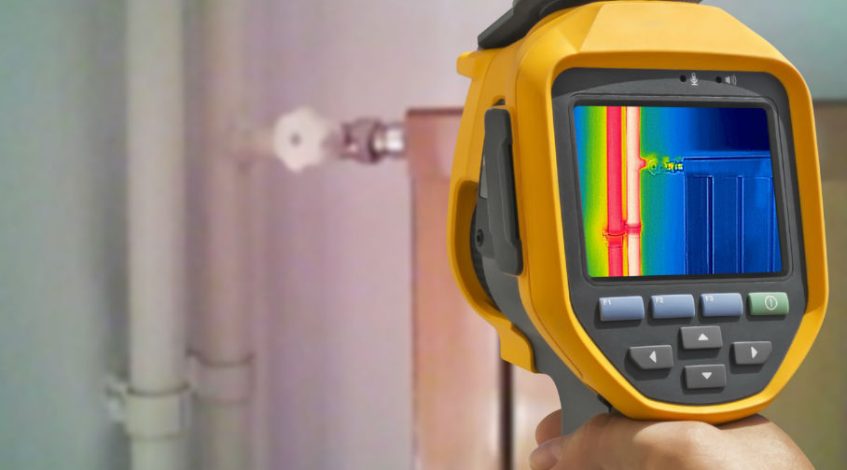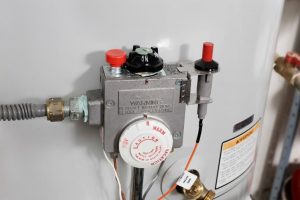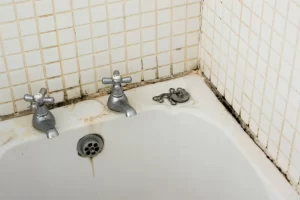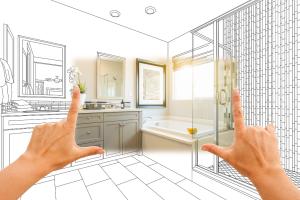Leaks don’t always make themselves obvious. Sometimes all you get is a faint smell, a damp patch that wasn’t there before, or a spot on the wall that’s slightly discoloured. You might notice the floorboards near the kitchen sink feel different under your feet.
“A dripping tap or a leaky pipe might seem like a small issue, but over time, it can waste a significant amount of water – and money. Even a single tap dripping once per second can waste up to 20 litres a day”, says Cyber Plumbers.
In the past, the only way to find a leak was to dig, drill, or tear things up. You’d pull tiles off the wall or lift half the floorboards, hoping to stumble upon the problem. That approach cost time, money, and left a mess behind. These days, it’s a different story.
Leak detection is now a skilled trade that relies on precision tools and training. The aim is simple: find the source of the leak quickly and with as little disruption as possible. And that means using the right equipment for the job.
So what’s in a professional’s toolkit? Let’s walk through the tools that make modern leak detection so accurate – and why they matter.
Listening for trouble: Acoustic equipment
When water escapes from a pipe under pressure, it creates sound. Not always loud enough to hear on your own, but the noise is there. That’s where acoustic tools come in.
The technician wears a headset and connects to a ground microphone. As they move across a surface, they listen for noises like hissing, splashing, or gurgling. These sounds bounce through the materials surrounding the pipe and can be picked up even through concrete or tiles.
It’s not just about pointing and hoping. The person using the tool needs to know what they’re hearing. A tiny leak in a copper pipe sounds different to a split in a plastic one.
A good technician can usually narrow it down to a small area, which means less damage and less time wasted during repairs.
Seeing heat with thermal cameras
When pipes leak, they often affect the temperature of nearby materials. A hot water pipe that bursts under the floor will warm the surrounding area. A cold water leak can make the space around it cooler. Thermal cameras show these changes in surface temperature.
The camera displays colour maps that highlight temperature variations. Blue areas might show cooler spots where cold water is leaking. Red or yellow zones could indicate a hot water problem.
This is especially helpful when leaks are behind walls or beneath flooring. You don’t need to pull anything apart to get useful information.
This method is fast, clean, and doesn’t leave a mark. It’s a common choice for finding leaks in bathrooms, kitchens, and areas with underfloor heating.
Using gas to pinpoint hidden leaks
If a leak is too small or buried too deep for sound or temperature to reveal it, professionals sometimes turn to gas. The process is straightforward but very effective.
First, the water is drained from the pipes. Then, a mix of harmless hydrogen and nitrogen gas is released into the system. Hydrogen molecules are incredibly small, which means they can escape through cracks too fine for water to pass through.
Once the gas is inside, the technician uses a handheld detector to scan the area above ground.
If there’s a leak, the detector picks up the gas as it escapes through the surface. The reading on the detector tells the technician exactly where the highest concentration is, which points them to the problem.
This technique is ideal for finding leaks under driveways, behind tiled walls, or in difficult locations where digging would be expensive or messy.
Measuring moisture levels in materials
It’s one thing to find the leak. It’s another to understand how far the water has spread. Moisture meters help with that.
There are two types. One uses pins to measure how much resistance there is in the material. Damp wood or plaster has less resistance, so it gives a different reading to dry material.
The second kind doesn’t need pins. It uses sensors to scan surfaces and detect moisture inside without leaving marks.
These readings help technicians decide whether parts of the wall or floor can be dried out or need replacing. Moisture meters are also useful for making insurance reports or checking if drying equipment has done its job.
Locating what’s underground
Before doing any digging or cutting, professionals need to know where pipes and cables are. Guessing is never a good idea. A damaged water main or power cable can turn a simple job into a serious problem.
Pipe and cable locators work by sending a signal through the service line. A receiver above ground then picks up that signal. This allows the technician to map out the route of the pipe or cable before doing any work. For plastic pipes, a small probe is often inserted to help trace the line.
It’s not the most exciting tool in the kit, but it’s one of the most important.
Looking inside with a camera
When dealing with blocked drains, cracked sewer pipes or collapsed stormwater lines, seeing the problem directly is a big advantage. That’s where inspection cameras come into play.
These are long, flexible cables with a waterproof camera on the end. They’re fed into the pipe and send back live video to a screen. The technician watches in real time, looking for any damage, blockage or misalignment.
They can also mark the location of the camera above ground, so they know exactly where to dig if needed. This avoids tearing up large sections of the yard or floor for no reason.
Making sure the job’s done: Pressure testing
After repairs, it’s important to make sure the leak is actually fixed. Pressure testing is a way to confirm that.
Part of the plumbing system is isolated, then filled with air or water. The pressure is measured over a set period. If the pressure stays steady, the system is sealed. If it drops, there’s still a problem.
Digital pressure gauges make it easy to spot even small pressure losses. This step gives the homeowner peace of mind and lets the technician sign off with confidence.
Why all this matters
Leaks don’t just waste water. Left untreated, they cause serious structural damage. Moisture can rot timber, destroy insulation, short out wiring, and encourage the growth of mould. The longer it’s left, the worse (and more expensive) it gets.
According to QBE Insurance, water damage is one of the leading causes of home insurance claims. Roughly one in four home insurance claims is due to internal water leaks, and the average claim is around A$5,000 – with more severe cases costing much more. These are often slow, hidden leaks that could have been detected earlier with the right tools.
This is why accurate detection matters. It’s not just about stopping the leak, but also avoiding the fallout that comes with it.
Leak detection done right
Finding a leak is no longer about tearing into every corner until something turns up. It’s about using the right tools, staying calm under pressure, and knowing what signs to look for.
From sound and temperature to gas and video footage, professionals have more ways than ever to locate leaks without damage.
If you think something’s not right in your home, don’t wait. Bring in someone who’s properly equipped – like a trusted member of the Best Plumbers Club. It might just save your walls, your floors and your wallet!







